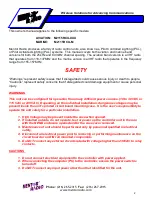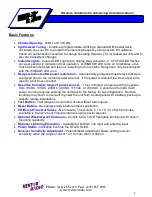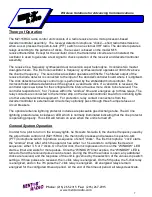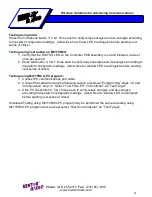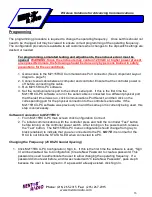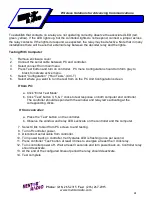
Phone
: (216) 265-2315
Fax
: (216) 267-2915
www.mentorradio.com
13
Wireless Solutions for Advancing Communications
When the M2115RCU is mounted outside, a location should be selected so that the antenna is not
“shadowed” by buildings or other obstructions in the direction from which aircraft may approach. For
maximum radio range, mount the antenna as high as practical. For outdoor operation, use of an
optional NEMA enclosure is required. Application of a waterproof sealant over external coaxial
connectors is recommended along with all electrical wires connecting between the internal relays and
external equipment.
Testing, Programming and Adjustments
Testing
Testing consists of operating the unit such that the control relays energize and de-energize to verify
that equipment connected to the relays are operating correctly. Testing the relays consists of either
actual energizing of the physical relays or performing a simulated energizing of the relays to test logic
and timing. To test the actual energizing of the relays, the test may be performed with or without the
aid of a PC or radio. In order to test the receiver portion of the controller any aviation band transceiver
may be used to produce the necessary microphone clicks. Customers may also test the physical
energizing of the relays and the controller/decoder's ability to energize the relays by performing a test
by pushing a test button installed on the front panel. The reset button cancels remaining timeout
interval and de-energize all relays.
Connecting a PC to the M2115RCU and running “test” using the M2115RCU-PC windows based
program allows users the ability to run tests from the controller. Further, the operating frequency may
be read directly from the controller and viewed on the PC to verify the correct operating frequency.
(NOTE: Please use correct programming software (25kHz or 8333kHz channel spacing) to verify the
correct operating frequency. Use the 25kHz programming software to verify the functionality of the
dip switch.)


